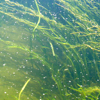
VIMS-led survey shows that bay-grass coverage increased between 2014 and 2015 from 75,835 to 91,621 acres, the highest total of the last three decades.

VIMS-led survey shows that bay-grass coverage increased between 2014 and 2015 from 75,835 to 91,621 acres, the highest total of the last three decades.
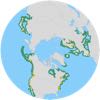
Unprecedented experiment conducted simultaneously at 15 sites shows algae-eating invertebrates control seaweeds that can smother seagrasses, and that more diverse animal communities perform this custodial service more effectively.

VIMS graduate student Emily French and her advisor VIMS Professor Kenneth Moore helped the Seagrass Species Specialist Group confirm the alarming loss of seagrass during the 11th International Seagrass Biology Workshop in Sanya, China.

VIMS-led survey shows that bay-grass coverage increased from 48,195 to 59,927 acres, reversing the downward trend of the previous 3 years.

VIMS study is first to link quality of seagrass habitat to density of juvenile blue crabs over large areas.

A team of European entrepreneurs and scientists aim to bring lessons learned from seagrass restoration in Virginia’s seaside bays to the coastal waters of Scandinavia.

Results from the VIMS-led seagrass monitoring program show that underwater grasses in Chesapeake Bay and its tidal rivers declined 24% between 2011 and 2012, approaching lows last reported in 1986.

New collaborative study between VIMS and USGS credits tiny crustacean "grazers" for maintaining health of seagrass meadows.
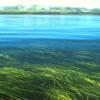
Professors Robert “JJ” Orth and Ken Moore are funded to work with Danish colleagues in an effort to develop innovative techniques and tools for eelgrass restoration.
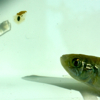
Research by graduate student Sarah Sumoski is first to show that marine animals can disperse eelgrass seeds, with implications for management and restoration.
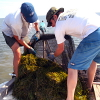
VIMS collaborates with The Nature Conservancy and volunteers to help collect eelgrass seeds on Virginia's Eastern Shore.

The abundance of underwater grasses in Chesapeake Bay declined by 21% between 2010 and 2011 to the lowest Bay-wide values since 2006. The 2011 coverage is more typical of what was observed prior to 1991 when grass acreages were at the lowest levels recorded by VIMS' annual aerial survey.
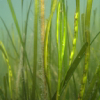
VIMS scientists and research partners document how a 15-year eelgrass restoration effort has led to a healthier and more vibrant ecosystem in Virginia's seaside bays.
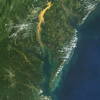
Data will allow researchers to gauge how a large plume of sediment from Hurricane Irene and Tropical Storm Lee may impact water quality and baygrasses in lower Chesapeake Bay.
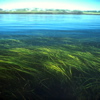
The first-ever study of the conservation status of individual seagrass species shows that 14% are at an elevated risk of extinction.

Coverage of underwater Bay grasses fell by 6,239 acres in Chesapeake Bay and its tributaries, partly due to hot summer temperatures.
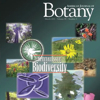
An international research team that includes professor Emmett Duffy of VIMS finds that loss of plant biodiversity disrupts the fundamental services that ecosystems provide to humanity.
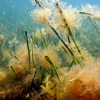
Dr. Emmett Duffy has received a 3-year grant from the National Science Foundation to establish a global experimental network for studying how changes in biodiversity impact seagrass beds.

Long-term field study of water quality and underwater grasses shows a clear link between the abundance of submerged aquatic vegetation and levels of nitrogen in Bay waters. When nitrogen levels rise, SAV coverage decreases. When nitrogen levels fall, SAV meadows expand.

VIMS collaborates with The Nature Conservancy and volunteers to help collect eelgrass seeds on Virginia's Eastern Shore.

Underwater bay grasses increased 12 percent in Chesapeake Bay and rivers in 2009, but coverage remains far below abundance goal.
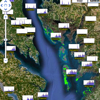
New tool in Google Maps allows web users to interactively view coverage of underwater grasses in Chesapeake Bay.
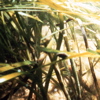
VIMS professor Robert Orth will describe his team’s success in restoring underwater grasses to Virginia's seaside lagoons during the International Marine Conservation Congress on May 20th.

VIMS research shows that underwater grasses increased in Chesapeake Bay and rivers in 2008.
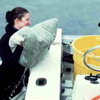
VIMS undertakes a collaborative venture to use volunteers to help collect eelgrass seeds for restoration in the seaside bays of Virginia’s Eastern Shore.
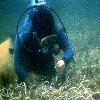
A study by VIMS professor JJ Orth and colleagues reveals that seagrasses are in trouble worldwide, yet the public remains largely unaware of the problem and its significance.